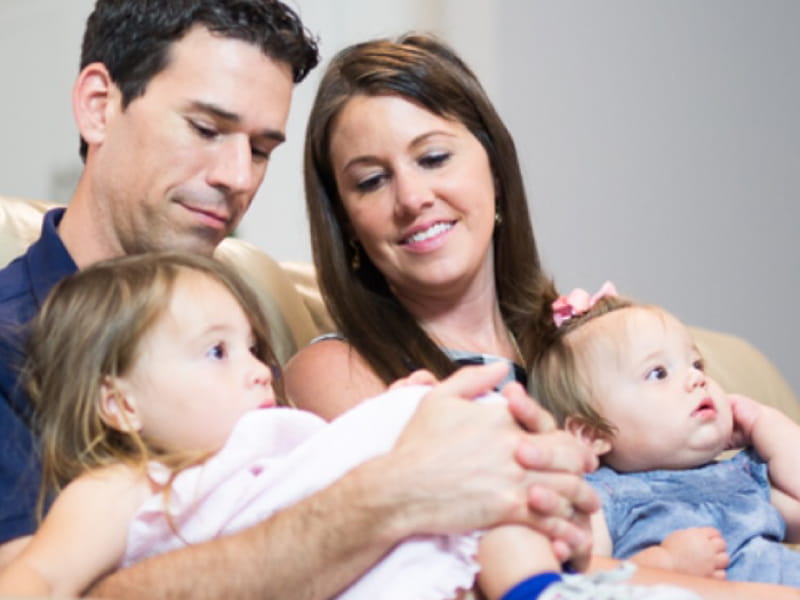Blood clots, uncontrolled bleeding and a stroke – all after giving birth
By American Heart Association News

Near the end of her second pregnancy, Amanda Moreland sliced open her knee. She applied pressure with a towel but couldn't fully stop the bleeding.
The next day, the Jacksonville, Florida, woman had a cesarean section to welcome her new daughter, Maddie. But Amanda doesn't remember it.
After her husband, Tony, snapped photos of mother and new baby, and nurses whisked Maddie away to take vital signs, doctors couldn't stop Amanda's bleeding.
"It's a month-and-a-half block that's gone from my life," she said.
Those six weeks were filled with complications and setbacks, culminating in a stroke that required an emergency operation to save Amanda's life. The source of it all was a rare condition in which blood clots form and block small vessels.
Her first memory after the ordeal is arriving home from the hospital to see two smiling girls.
"I'm just very thankful for my family and the doctors and everyone that helped me get to where I am today," she said.
And there were many people involved.
Because of the profuse bleeding following the C-section, Amanda's doctor said she needed an emergency hysterectomy. Soon after the surgery she became incoherent.
Doctors moved Amanda to the intensive care unit. She got blood transfusions and Tony learned she had disseminated intravascular coagulation. The diagnosis explained all her bleeding episodes.
That bleeding triggered swelling that left her body twice its normal size. The weight was crushing her organs. She couldn't breathe on her own, so doctors put her on a ventilator.
She needed surgery to stop the bleeding, and fast. But her doctors had a dilemma: They couldn't do it when her blood wouldn't clot. So they gave her a clotting drug that came with risks. Amanda's doctor told Tony to call family members and friends who might want to see her.
"We said our peace," Tony said.
The surgery was a success.
Doctors kept Amanda on a ventilator and in an induced coma to help her body recover from all her traumas. Hours later, doctors called Tony who had gone home to see his daughters. The drug that was helping slow her bleeding created a clot in her brain and Amanda had a stroke.
She now needed another operation, but it had to be done at another hospital. Amanda was transported by helicopter. Tony later saw a notation on her chart that said she would likely be dead on arrival.
Two weeks later, Amanda could breathe on her own. Although she was still suffering many devastating effects of her stroke, she cradled her newborn in her arms for the first time.
Amanda eventually relearned how to talk, walk, eat, dress herself and shower. Then, one morning, she forgot to put on the cushioned helmet she was supposed to wear to protect her brain. Tony found her unresponsive on the bathroom floor.
After that, Amanda's right side was paralyzed and she had aphasia, which restricts the ability to express or understand written or spoken language. For the next five months, she once again was working with physical, occupational and speech therapists.
Three years later, Amanda has fully recovered. She's back to work as a project manager at a brokerage company.
"I'm fine now," she said, "but it was rough in the beginning. I couldn't hold my daughters. My oldest didn't understand why I wasn't taking care of her, and with my helmet on, I didn't look like mom."
She's thankful for her family's support. "Love your husband, love your family, and they will be there for you."
Stories From the Heart chronicles the inspiring journeys of heart disease and stroke survivors, caregivers and advocates.





